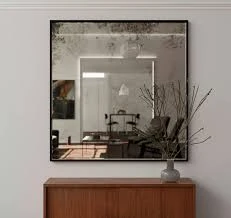

The Evolution of Flat Glass in Modern Architecture and Design
Flat glass, a ubiquitous material in contemporary architecture and design, has significantly transformed the way we perceive and interact with our built environment. Often taken for granted, this versatile substance serves not only functional purposes but also enhances aesthetic appeal, promotes energy efficiency, and contributes to structural integrity. The journey of flat glass from its historical origins to its modern applications is a testament to human ingenuity and technological innovation.
Historically, glass-making dates back thousands of years, with the earliest forms being utilized in ancient civilizations. However, the art and science of producing flat glass began to take shape during the late Middle Ages. The development of the Crown glass and Cylinder glass processes marked the initial strides toward creating larger panes that could be used in windows and other architectural applications. These methods, though primitive by today’s standards, laid the groundwork for the future of glass production.
The Evolution of Flat Glass in Modern Architecture and Design
In the 20th century, advances in technology continued to reshape the landscape of flat glass production. The invention of the float glass process by Sir Alastair Pilkington in the 1950s revolutionized the industry. This method, which involves floating molten glass on top of molten tin, results in exceptionally smooth and uniform sheets of glass. With this innovation, glass transition was achieved at a scale and quality previously unimaginable, allowing architects to incorporate expansive glass walls, skylights, and curtain walls into their designs.

Today, flat glass is not merely a functional element but a fundamental part of contemporary aesthetic trends. Its ability to create open and airy spaces is a defining characteristic of modern architecture. The transparency and reflective qualities of glass allow natural light to flood indoor spaces, reducing the need for artificial lighting and enhancing the well-being of occupants. Large glass panels create a seamless connection between the interior and exterior, promoting a sense of unity with nature.
In addition to aesthetic applications, flat glass has evolved to address environmental concerns. Modern production techniques have led to the development of energy-efficient glass technologies, such as low-emissivity (Low-E) coatings and double or triple glazing. These advances help reduce energy consumption in heating and cooling buildings, thus playing a crucial role in sustainability efforts. For instance, solar control glass can significantly decrease heat gain in warmer climates, contributing to lower energy bills and a reduced carbon footprint.
Moreover, safety and security have become paramount in flat glass applications. The advent of tempered and laminated glass has enhanced the safety of buildings, making them more resistant to impacts and breakage. This is particularly critical in urban environments where glass is extensively used in high-rise buildings.
As we look to the future, the role of flat glass in architecture and design will undoubtedly continue to evolve. Innovations such as smart glass, which can change its properties based on environmental conditions, promise even greater versatility and energy efficiency. The integration of technology with traditional glass-making processes will likely yield exciting new applications, further blending aesthetics with functionality.
In conclusion, flat glass has come a long way from its humble beginnings. It embodies the intersection of art, science, and technology, reflecting the evolving needs and aspirations of society. As architects and designers harness its potential, flat glass will remain a cornerstone of modern design, shaping the spaces we inhabit while contributing to a more sustainable future. Its journey is far from over, and its impact on our world will only continue to grow.